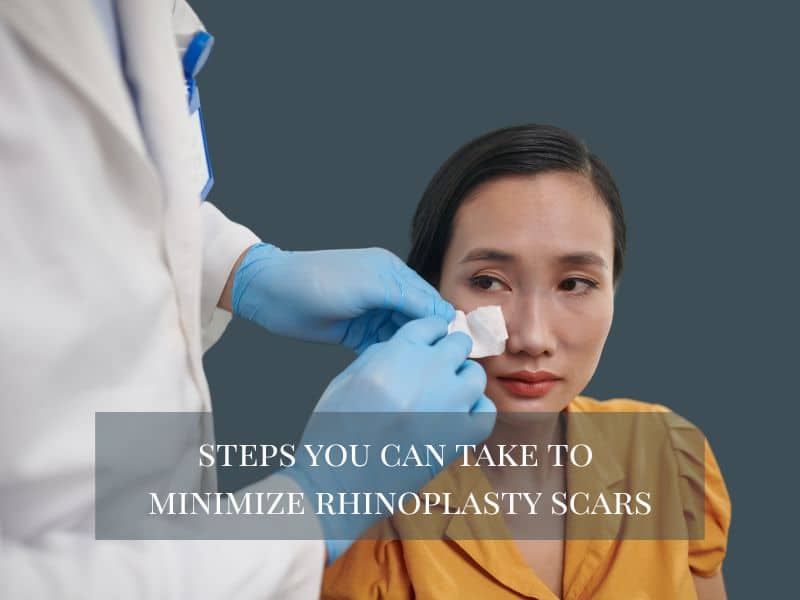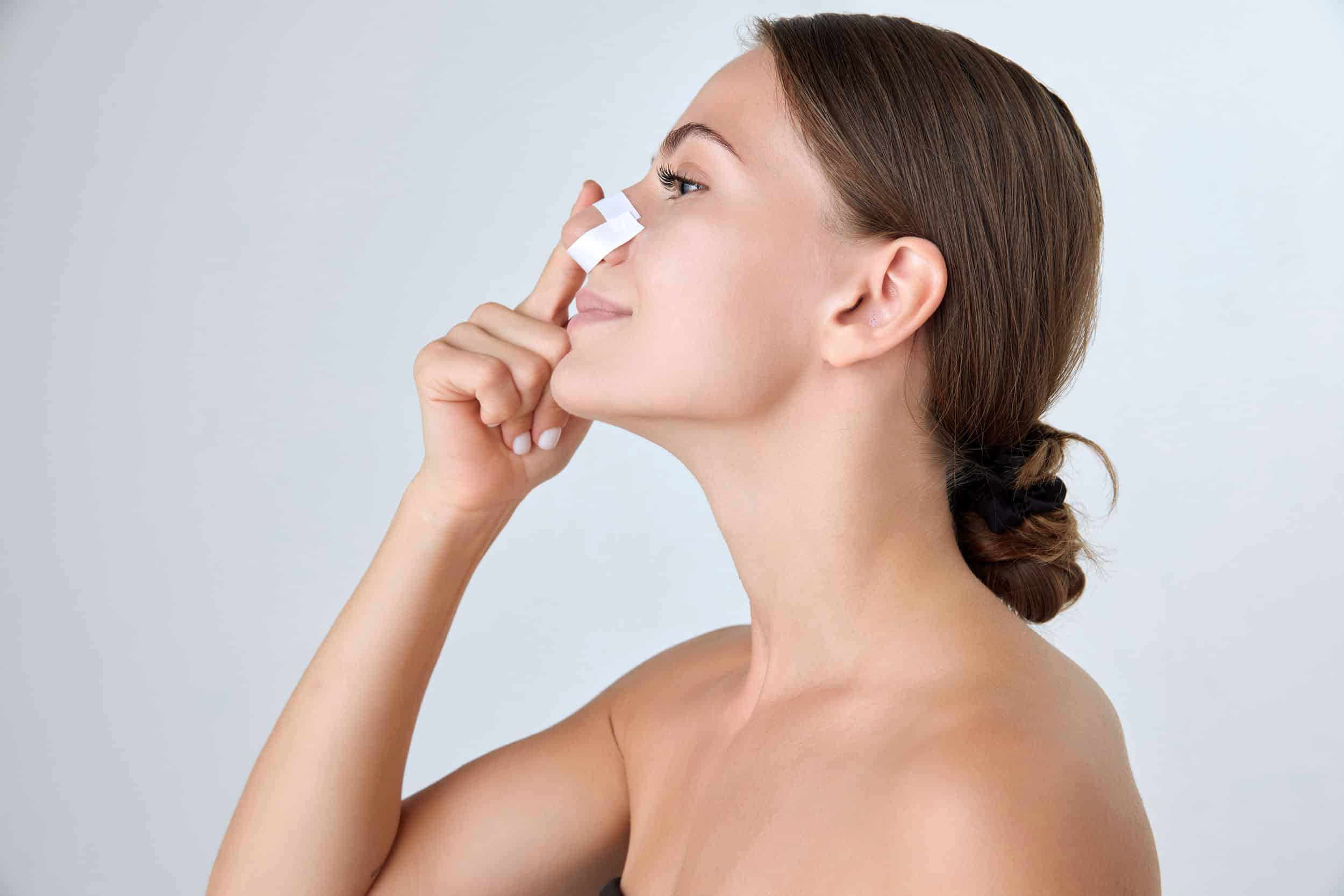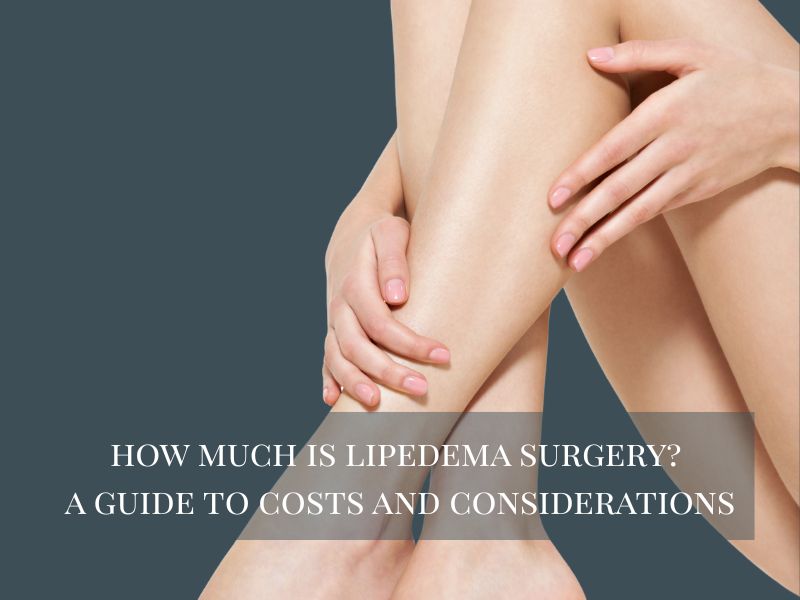Rhinoplasty, or nose reshaping surgery, is a popular choice for anyone who wants to create a more balanced facial appearance and correct their nasal structure. However, a common question patients have is, “Does rhinoplasty leave scars?”
The short answer is yes, but with skilled techniques and proper aftercare, rhinoplasty scars are usually minimal and often barely noticeable.
Today, we’ll look at the different types of rhinoplasty, discuss how scarring differs based on the approach used, and discuss what steps you can take to ensure your results are smooth and natural.
The Different Rhinoplasty Approaches

Rhinoplasty procedure can be performed in two main ways: open rhinoplasty and closed rhinoplasty. Each technique has its specific benefits, and each can affect scarring differently. Let’s look at these two approaches and see how they could affect your rhinoplasty scars.
Open Rhinoplasty
In open rhinoplasty, the surgeon makes a small incision at the base of the nose, between the nostrils. This provides much easier access to the nasal structure, making it a better choice for situations that require difficult reshaping or structural correction. While this incision is small, it does cause a tiny scar on the columella (the tissue between the nostrils).
Although open rhinoplasty procedure involves an external incision, rhinoplasty scars from this technique are usually minimal. With careful placement of the incision and the correct post-surgical care, any scars tend to fade over time. For most patients, the scar is barely noticeable and blends into the skin’s natural contours.
Closed Rhinoplasty
Closed rhinoplasty, on the other hand, involves incisions that are made inside the nostrils, which means there are no visible external scars. This technique is most commonly used for minor adjustments and reshaping because it limits access to certain areas of the structure of the nose.
Closed rhinoplasty procedure is often the preferred choice for patients who want to avoid any visible scarring because all of the incisions are hidden entirely within the nose.
For patients who require simpler and more straightforward adjustments to their nose, closed rhinoplasty is a great way to improve aesthetics without any rhinoplasty scars on the outside of the nose. Because all incisions are internal, this method generally has a faster recovery time with fewer concerns about visible scars.
Steps You Can Take to Minimize Rhinoplasty Scars

While scars are usually small, there are some steps you can take to help them heal smoothly and fade over time. Following your surgeon’s post-operative care instructions is one of the most important things you can do to minimize scarring.
These instructions usually include how to clean the incision site, what medications to use, and steps to take to avoid irritation. Protecting the area from sun exposure is also important because UV rays can darken your scars and make them more visible. Using a gentle, high-SPF sunscreen or wearing a hat when you’re outside helps to shield your skin and helps it heal faster.
It’s also best to avoid strenuous activities early in the recovery process. High-impact activities can disrupt the healing process, especially those that might accidentally bump your nose. Giving your body the time it needs to recover fully can prevent additional strain on the incision areas.
Staying hydrated and eating nutrient-rich foods are also helpful for speedy recovery. A diet high in vitamins A, C, and E, along with proper hydration, can support your body’s tissue repair process and help the skin heal better, leading to the fading of your rhinoplasty scars over time.
Applying topical scar treatments can also help reduce any scar visibility. Your surgeon may recommend gentle scar creams or silicone gel sheets, which, when used as directed, help soften any visible scar tissue and support healing.
The healing process for rhinoplasty scars is gradual, and it’s normal for scars to take some time to fade completely. Many patients find that rhinoplasty scars become less noticeable within the first few months and continue to fade over the first year or longer.
Being patient with the healing process is essential. Redness or slight swelling is part of the natural recovery cycle. Scars generally soften and lighten over time when they are properly cared for. Attending all follow-up appointments with your surgeon will allow them to monitor your progress, address any concerns, and provide additional care tips to minimize scarring.
Avoiding smoking and heavy alcohol consumption both before and after your rhinoplasty surgery can also make a significant difference in scar healing. These habits can slow tissue repair and make it harder for your scars to fade.
Rhinoplasty procedure Frequently Asked Questions
Does open rhinoplasty leave noticeable scars?
Open rhinoplasty may leave a small scar at the base of the nose. With skilled surgical placement and proper aftercare, this scar is usually minimal and fades over time, blending into the natural skin folds.
How can I minimize scarring after rhinoplasty?
Minimizing scars involves following your surgeon’s instructions, avoiding sun exposure, using recommended scar treatments, and maintaining a healthy lifestyle. Staying hydrated, protecting your skin, and avoiding strenuous activities during recovery also play a crucial role in reducing scars.
How visible are rhinoplasty scars in the long term?
In most cases, scars are barely noticeable over the long term. Scars typically fade within a year, and with proper care and sun protection, they aren’t really noticeable.
What should I know about scarring when choosing between rhinoplasty surgeons for my nose job?
When selecting a plastic surgeon for your surgical procedure, it’s important to understand that both cosmetic and reconstructive surgery approaches can affect scarring outcomes. Experienced rhinoplasty surgeons use precise techniques to minimize visible scarring, whether you’re having a primary nose job or revision surgery.
The skill and experience of your chosen surgeon play a crucial role in scar placement, healing, and final aesthetic results, making it essential to research their specific expertise in rhinoplasty techniques and review before-and-after photos of their previous patients.
Can laser treatments help correct a crooked nose while ensuring smooth recovery and optimal rhinoplasty results?
Laser treatments offer significant advantages for correcting a crooked nose through enhanced precision and reduced tissue trauma. The laser technology allows surgeons to reshape nasal structures with greater accuracy while minimizing bleeding and swelling, which contributes to a smooth recovery process.
Additionally, laser-assisted techniques can improve nasal passages function by precisely addressing structural deformities that may obstruct breathing. Patients typically experience faster healing times and achieve superior rhinoplasty results compared to traditional methods, with studies showing higher patient satisfaction rates and reduced postoperative complications.
How long does septoplasty recovery take and what should I expect?
Most people recover from septoplasty within 1–2 weeks, with initial swelling and congestion resolving in the first several days. You can usually return to light activities or work after about a week, but strenuous exercise should be avoided for at least two weeks.
Full healing of the nose may take several months. To recover smoothly, rest with your head elevated, avoid blowing your nose, follow your surgeon’s care instructions, and attend all follow-up appointments
What is non-surgical rhinoplasty?
Non-surgical rhinoplasty exclusively targets cosmetic imperfections and cannot improve breathing problems or correct structural issues like a deviated septum.
This procedure uses hyaluronic acid fillers such as Restylane and Juvederm to camouflage dorsal humps, enhance nasal bridge height, or correct minor asymmetries by adding volume to specific areas.
The treatment takes approximately 15 minutes and requires no anesthesia, allowing patients to see immediate results and return to normal activities the same day.
Book Your Rhinoplasty surgery at Aesthera Plastic Surgery
Are you ready to enhance your appearance with rhinoplasty? At Aesthera Plastic Surgery, we’re here to guide you through every step of the journey, from the initial consultation to a beautifully healed outcome.
Our experienced team, led by board certified plastic surgeon Dr. CV Chegireddy, is dedicated to delivering natural, elegant results with minimal rhinoplasty scars so you can enjoy your transformation with confidence. Book your consultation today, and let’s work together toward achieving your aesthetic goals.



